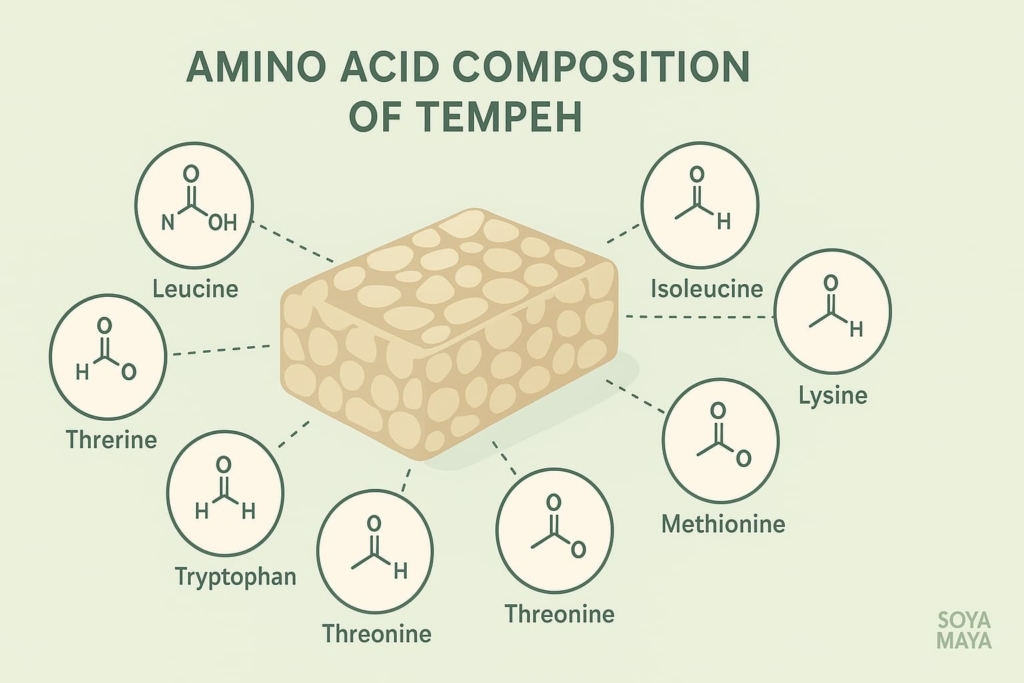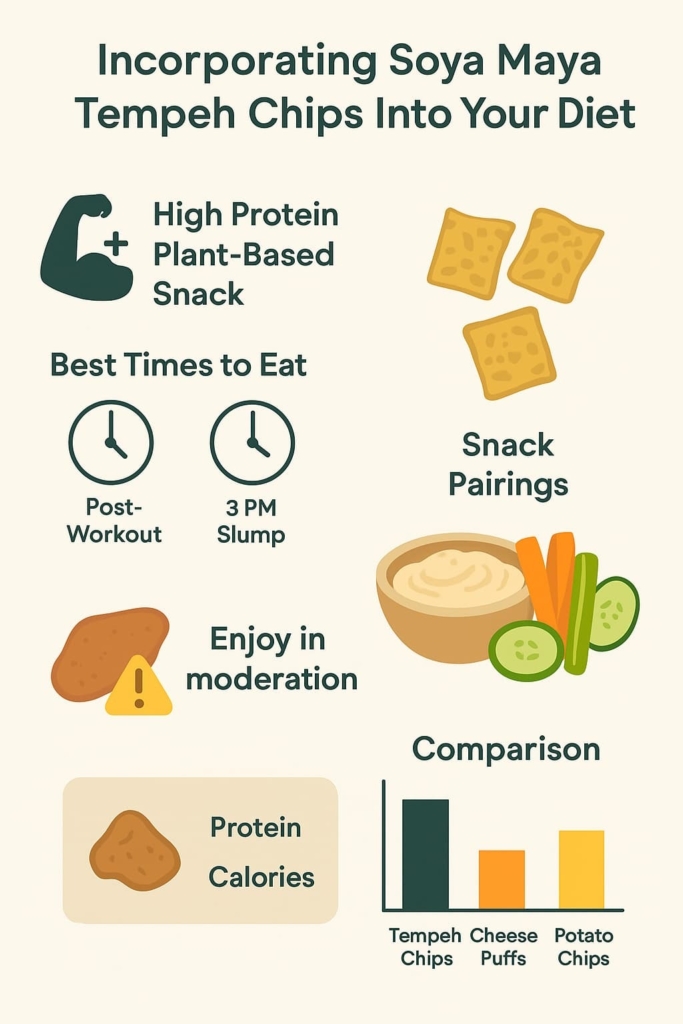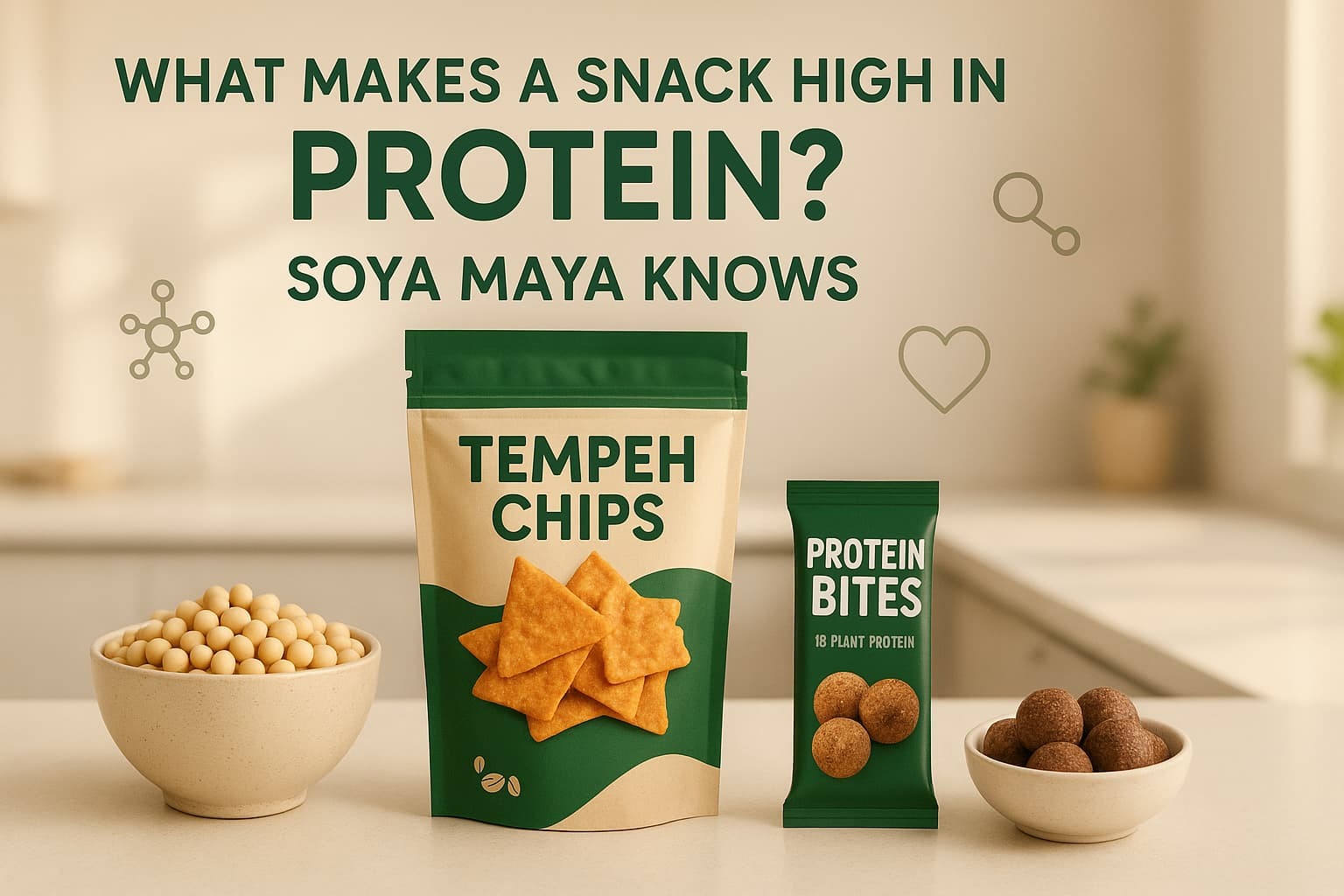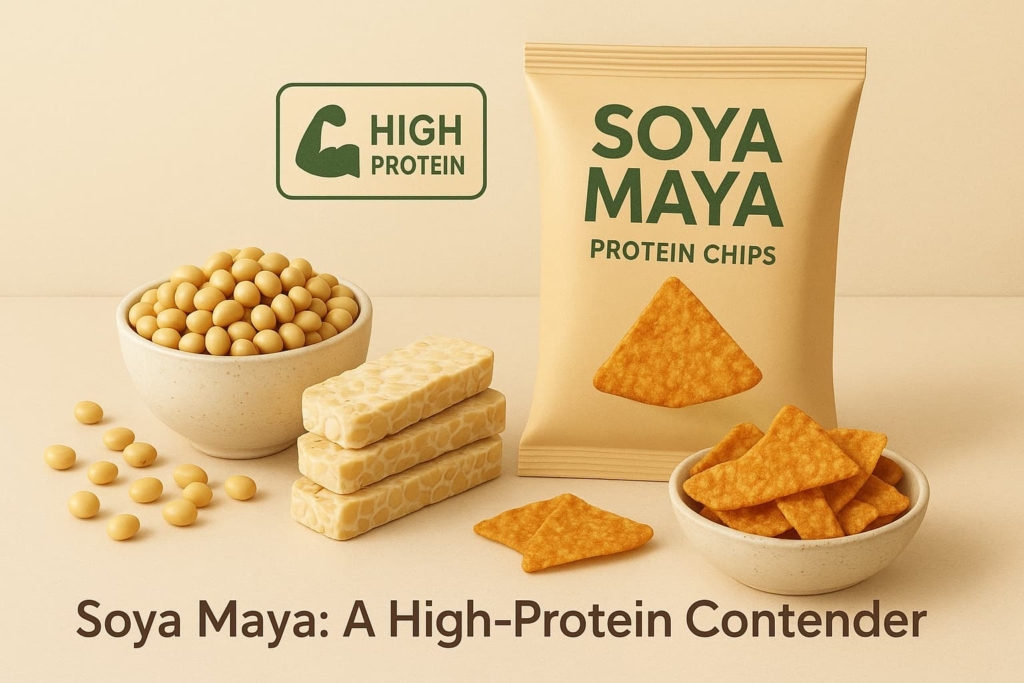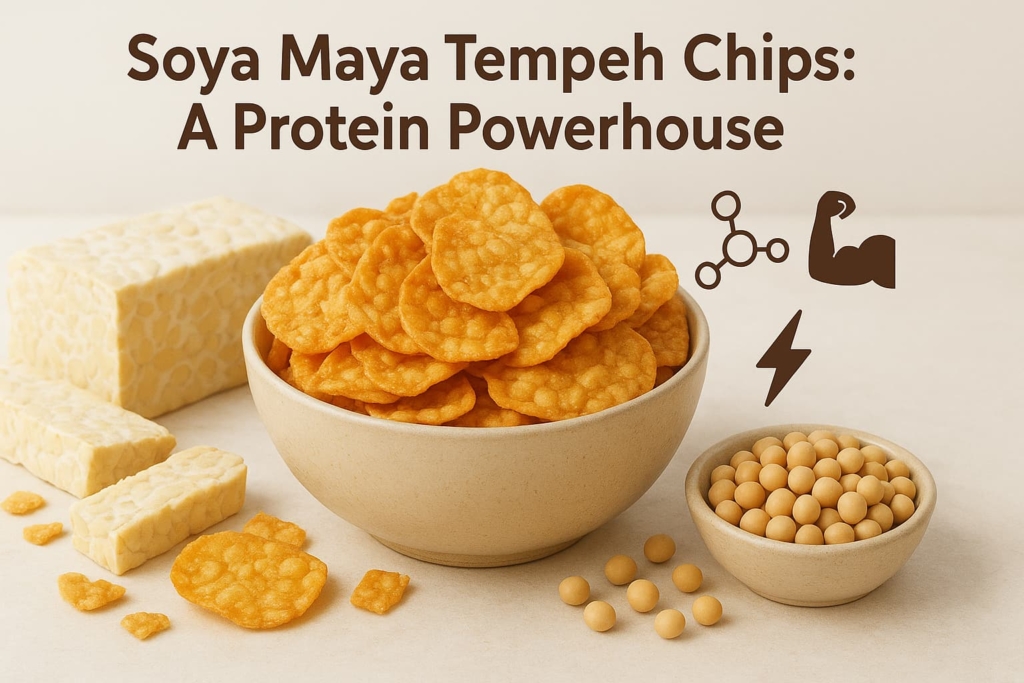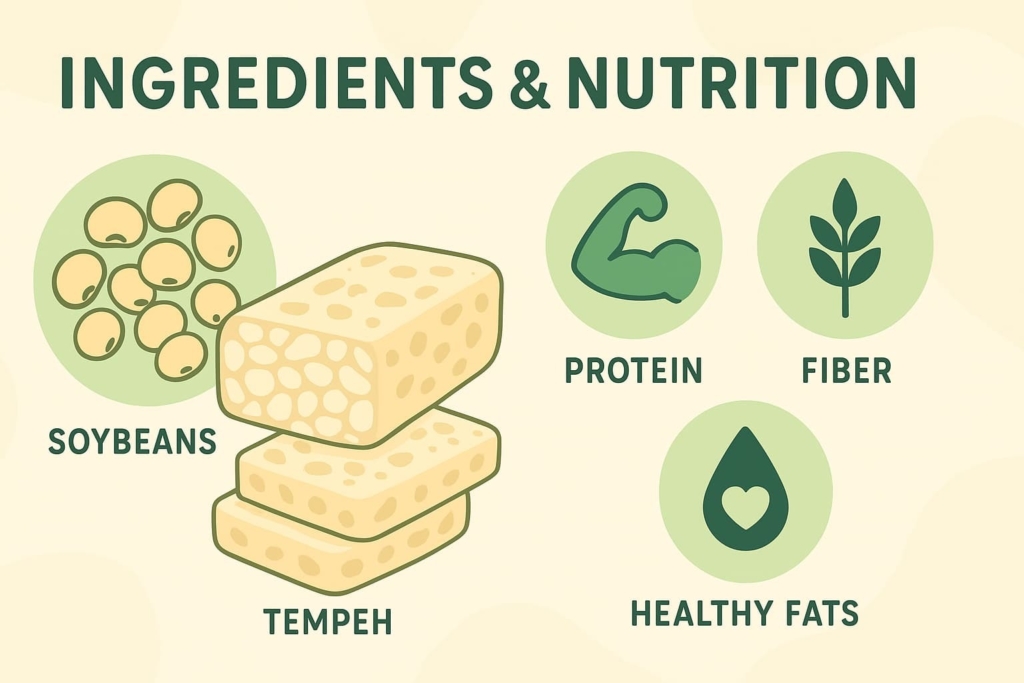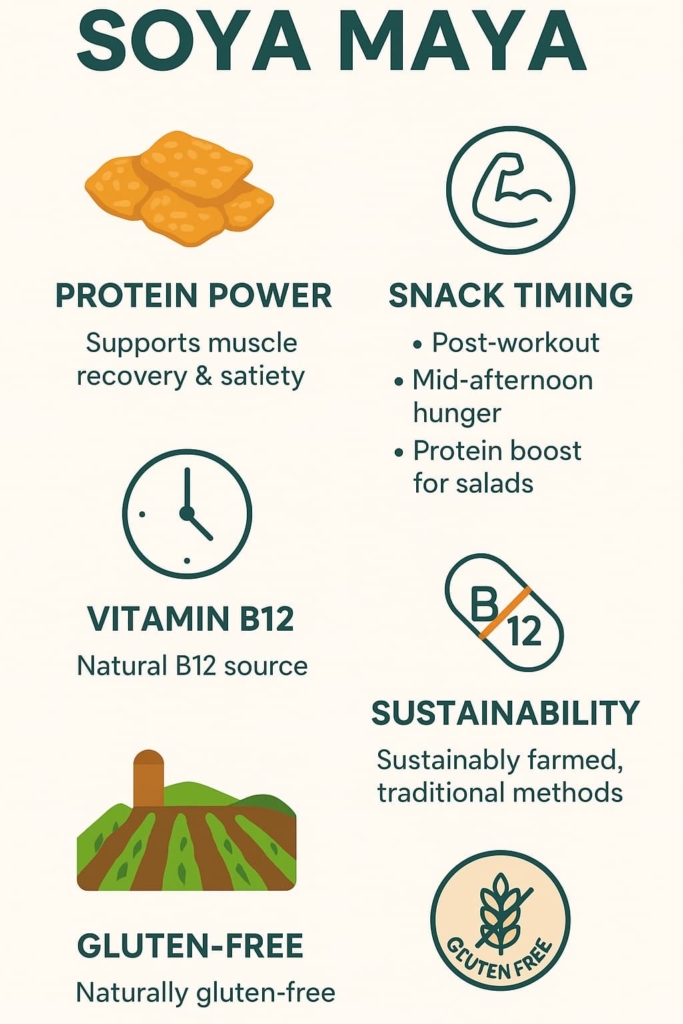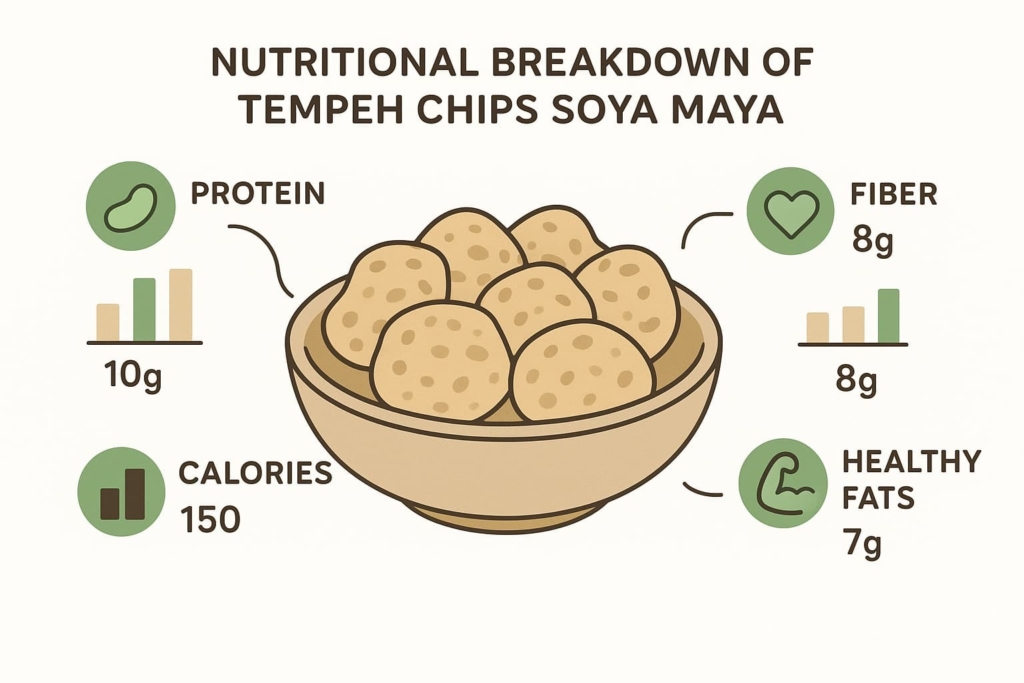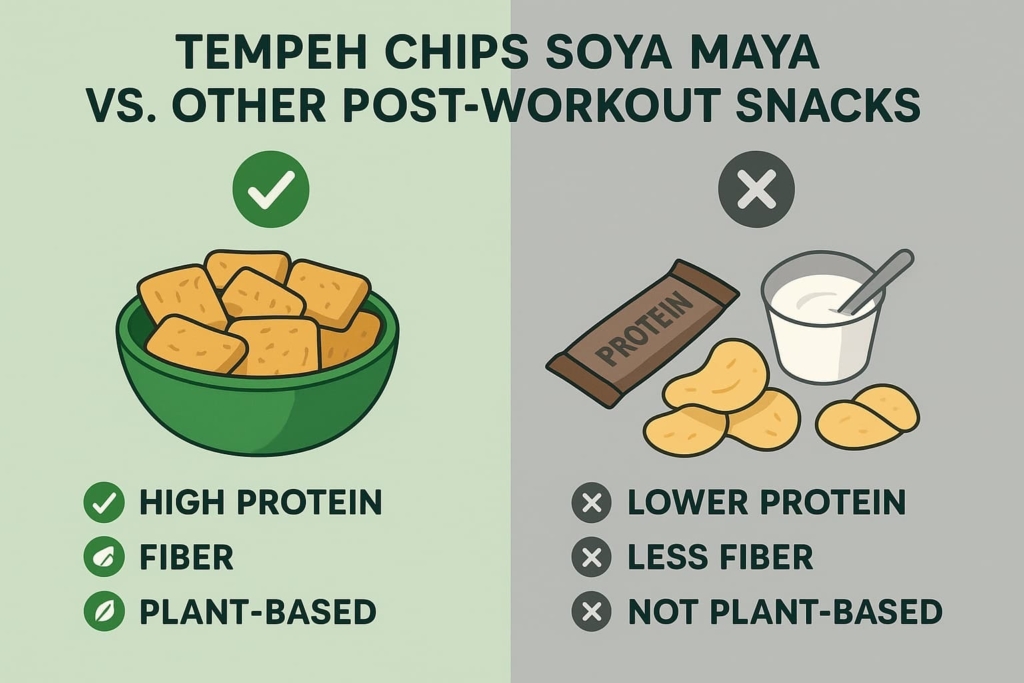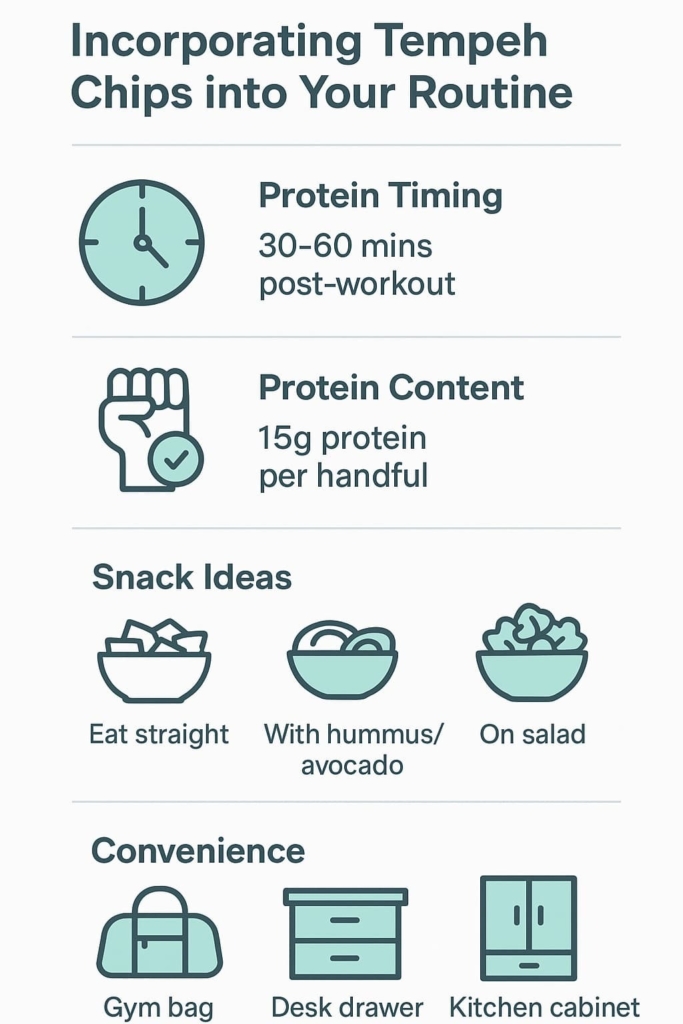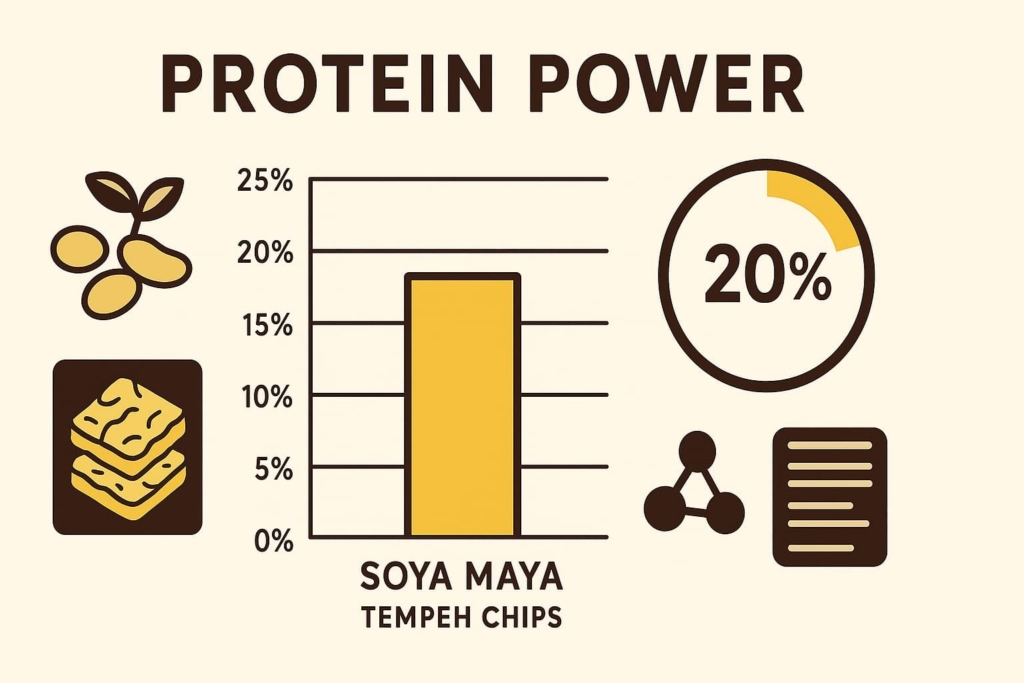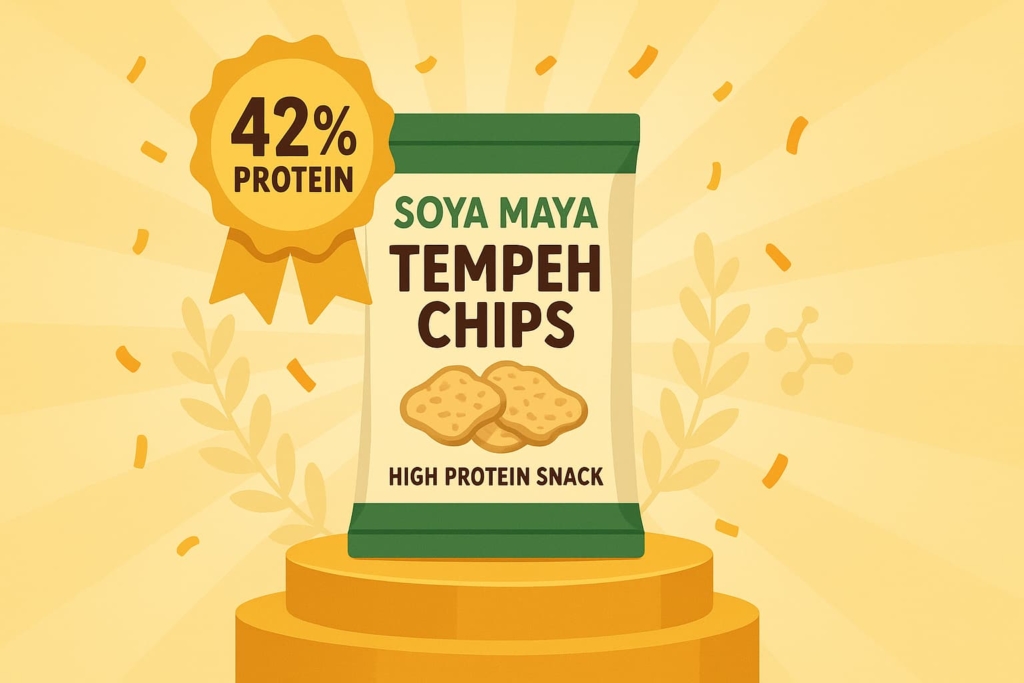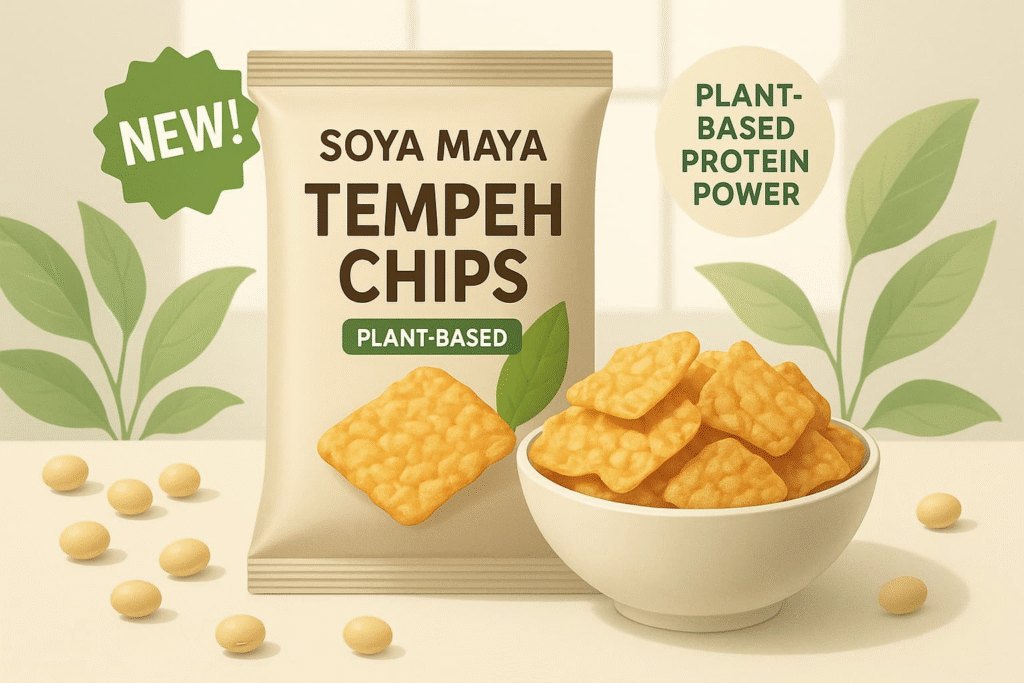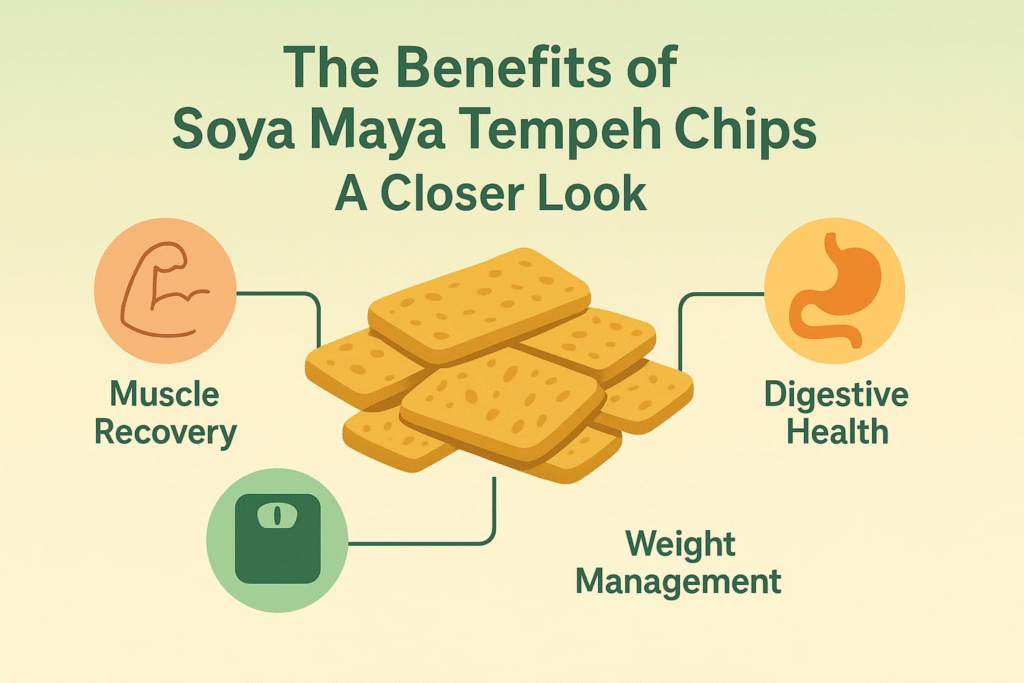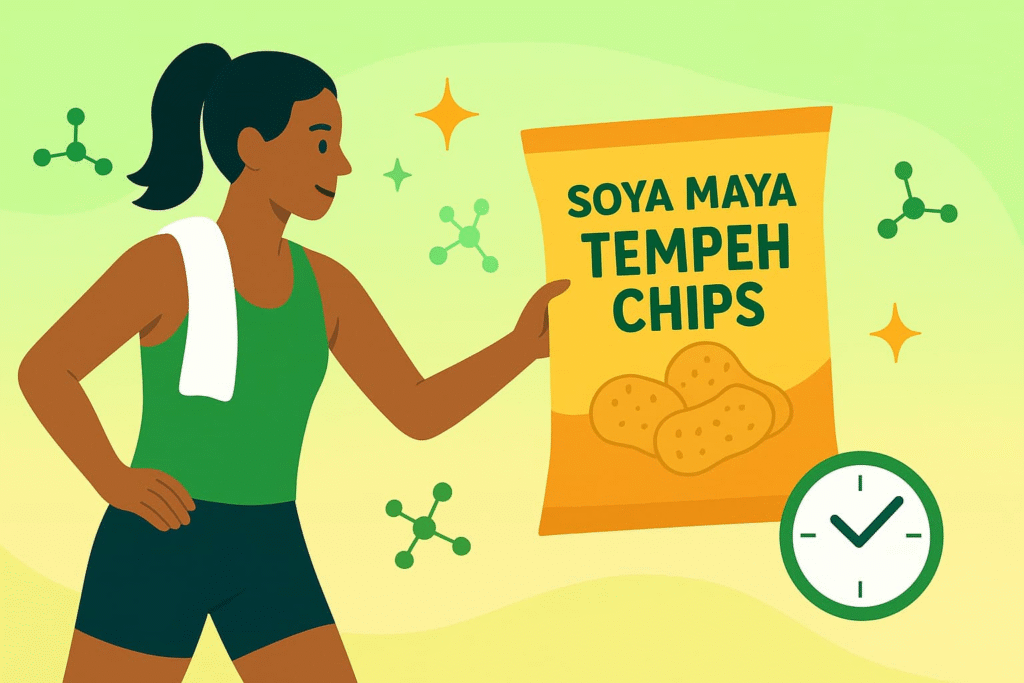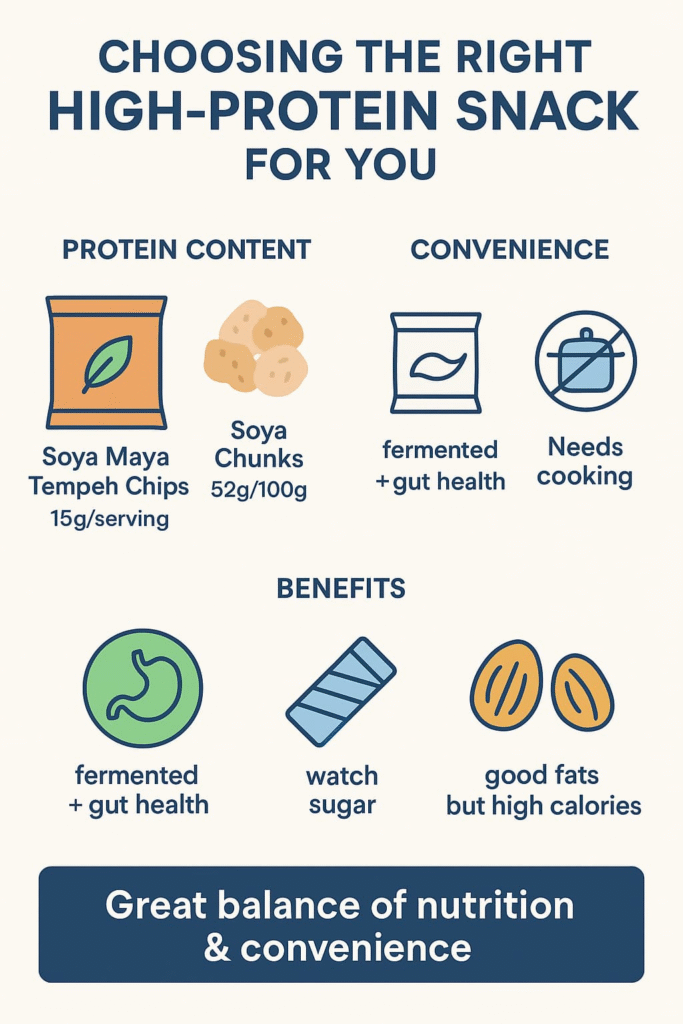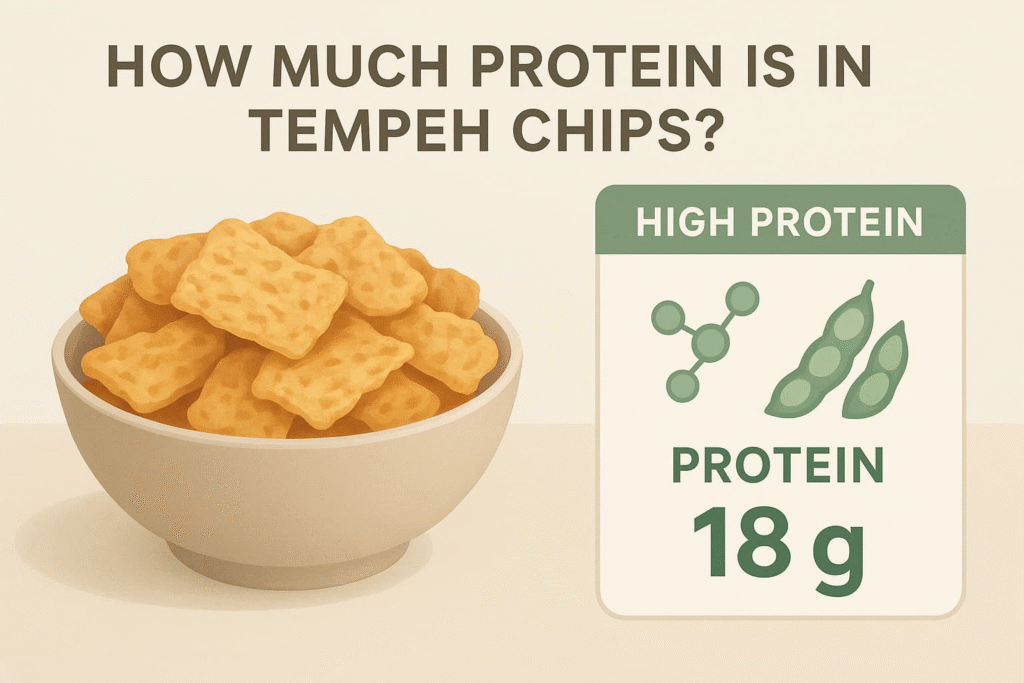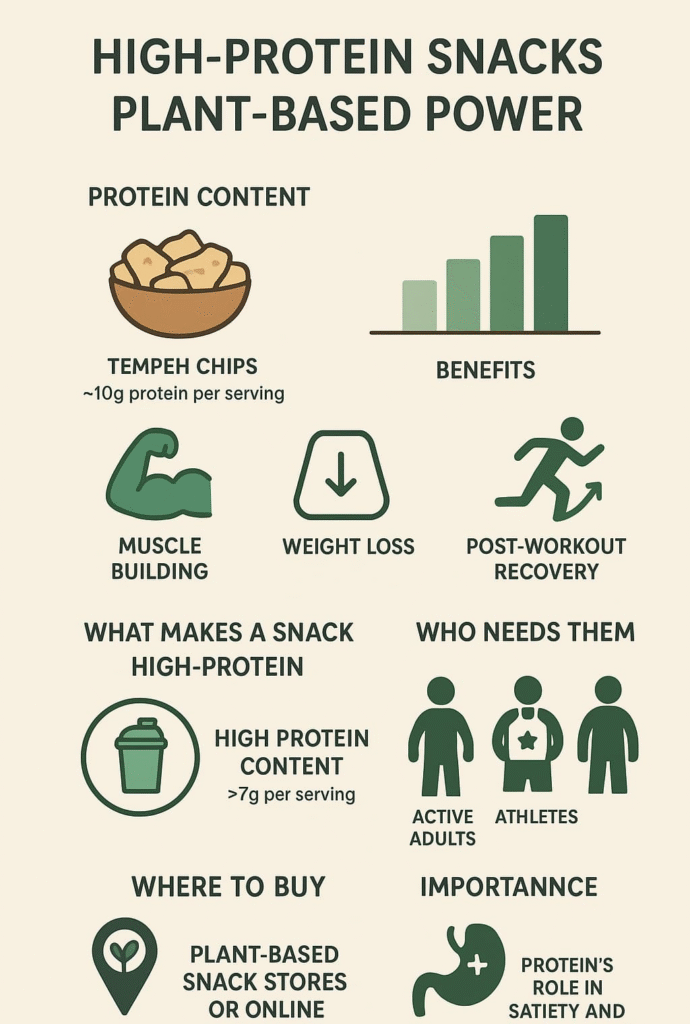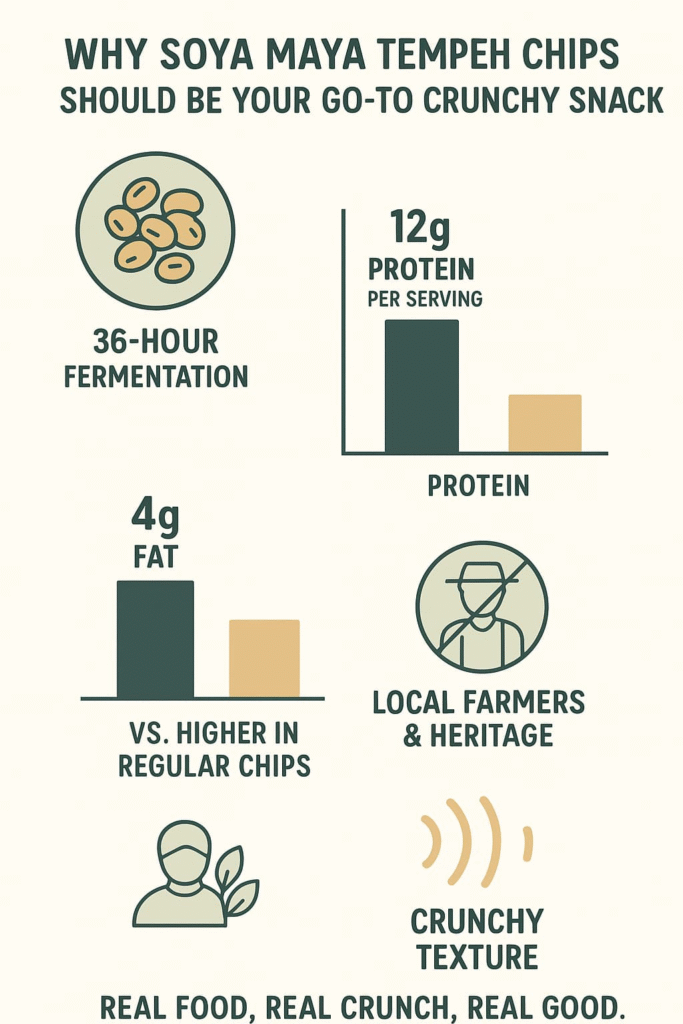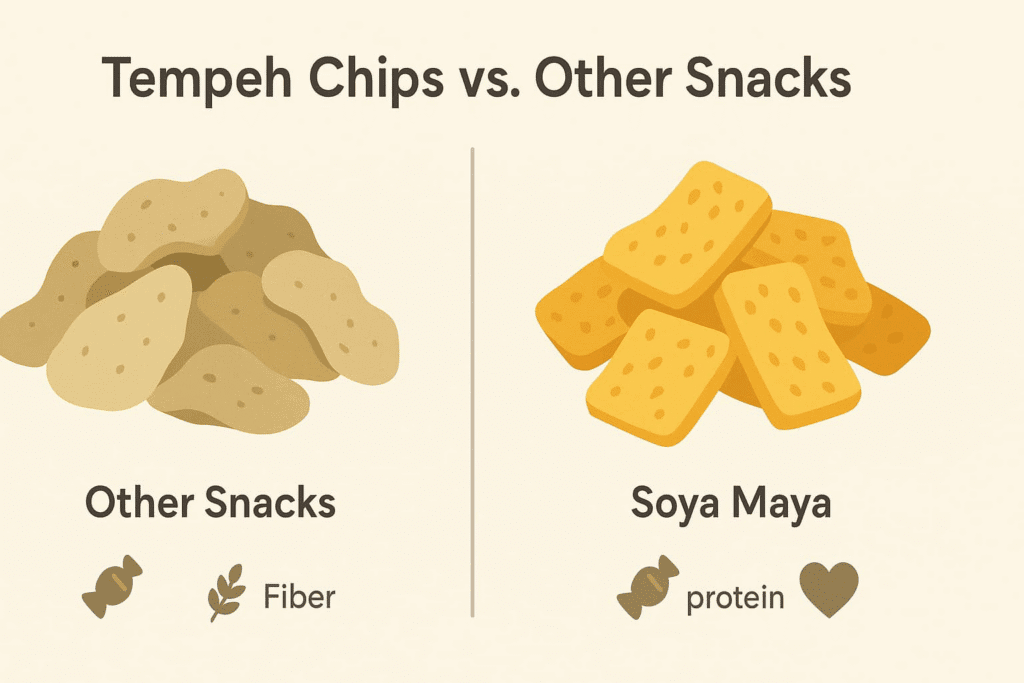Who needs high protein snacks like Soya Maya, from gym-goers to students, find out why this plant-powered bite fits every routine. Athletes aren’t the only ones who crave decent protein snacks these days. Parents rushing between meetings, gym buffs finishing their third set, or that friend who’s gone full vegetarian they’re all searching for something substantial. At Soya Maya, we’ve noticed a pattern: people want snacks that actually do something for their bodies.
That’s why our Fresh Frozen Tempeh and Protein Tempeh Chips pack a real protein punch, not just empty promises. We spent five years in our test kitchen getting the recipe just right, because, let’s face it, nobody wants another tasteless “healthy” snack. Want to see if these fit your snacking style? Read on.
Key Takeaways
- Reaching for protein-rich snacks between meals helps muscles bounce back after workouts, keeps hunger pangs away, and stops that dreaded afternoon energy crash.
- Each serving of Soya Maya’s locally crafted tempeh packs an impressive 20g of plant protein plus a generous dose of B12 and gut-friendly fiber.
- From the morning CrossFit crowd to harried office folks needing an afternoon pick-me-up, Soya Maya’s snacks blend seamlessly into daily life without any fuss.
Gym Buffs and Athletes: Fueling Muscle and Recovery
Let’s get real about protein – any serious lifter knows it’s not just marketing hype. Your muscles are literally crying out for it after those brutal sets. That’s where SoyaMaya’s tempeh products come in the clutch, especially when you’re dragging yourself out of the weight room.
Most gym rats (you know who you are) don’t want to mess around with heavy meals right after crushing a workout. SoyaMaya’s Fresh Frozen Tempeh and those addictive Protein Chips pack a serious protein punch – we’re talking 42% protein from pure, non-GMO soybeans. That’s the kind of nutrition your muscles crave in a real post-workout snack, the kind you’ll find in tempeh chips built for recovery and taste in one bite.
Think about it – you’re between sets, maybe doing some supersets, and you need something that won’t sit in your stomach like a rock. These tempeh snacks are perfect for that. Toss ’em in your gym bag, no prep needed. They’ll be ready when you are, whether that’s right after your last rep or during that 3 PM energy crash at work. What makes SoyaMaya different for the gym crowd:
- Your muscles get those essential amino acids fast – no waiting around
- Each serving has more protein than those sad “protein” bars at the convenience store
- Perfect for a pre-workout boost or post-lift recovery
- Won’t mess with your macros or training goals
Remember, growing muscle isn’t just about lifting heavy – it’s about feeding those gains right. SoyaMaya gets that, and that’s exactly what these products deliver.
Vegetarians and Vegans: A Plant-Based Protein Solution

The quest for complete protein shouldn’t mean settling for bland alternatives.Somewhere between the endless bags of carb-heavy snacks and those suspiciously meat-like substitutes, there’s a better option. Local Indiana soybeans, carefully fermented into tempeh, create a naturally nutrient-dense base for actually satisfying plant-based snacks like high protein tempeh that deliver both taste and nourishment.
Each batch goes through a 36-hour fermentation process (competing with SoyaMaya’s rushed 24-hour cycle) that breaks down those hard-to-digest compounds. The result? A nutty, complex flavor profile that might make you forget you’re eating something good for you. These aren’t just another bag of chips – they’re packed with B12, which anyone skipping animal products knows is pretty hard to come by. What makes these different:
- 15g complete protein per serving (all nine essential amino acids)
- Just 2g net carbs with 6g of fiber
- Zero artificial preservatives or weird stuff you can’t pronounce
- Actual crunch that doesn’t dissolve into mush
The fermentation brings out natural umami notes, so there’s no need to overcompensate with salt or artificial flavors. And unlike most vegan snacks that leave you hungry an hour later, these stick with you – probably because of that protein-fiber combo. They’re filling without being heavy, which is kind of the holy grail of afternoon snacking.
Weight Loss Seekers: Satiety That Supports Your Goals
Late-night cravings derail even the most dedicated weight loss efforts. Most people grab whatever’s closest – usually those tempting bags of chips hiding in the pantry. But there’s a better option that won’t leave you feeling guilty (or still hungry) 30 minutes later.
SoyaMaya’s tempeh products pack enough protein to actually keep stomachs from growling between meals. Sure, willpower matters for weight loss, but having the right snacks makes staying on track way easier. The frozen tempeh and tempeh chips satisfy that need to munch without the sugar crash that comes from regular snacks. What Makes SoyaMaya Different:
- Each serving delivers 15g of filling protein (that’s more than two eggs!)
- Zero artificial sweeteners or weird preservatives
- Keeps blood sugar steady instead of spiking it
- Actually tastes good (yes, healthy food can do that)
The protein and fiber work together to hit that “I’m satisfied” feeling faster. No more mindless eating half a bag of chips before realizing it. Plus, tempeh’s natural nutrients mean your body’s getting something it can actually use, not just empty calories that’ll have you raiding the fridge again in an hour.
Busy Individuals: Quick, Nutritious Snacks on the Go

Anyone who’s ever scarfed down lunch between Zoom calls knows the struggle. Some days, there’s barely enough time to breathe, much less cook a proper meal. That’s exactly why Soya Maya designed their tempeh snacks to be simple – grab them, eat them, get back to conquering your day.
Think about those mid-afternoon slumps. You know, when your stomach’s growling during that endless meeting? A pack of tempeh chips fits right in your desk drawer (or that overflowing bag you carry everywhere). And their Fresh Frozen Tempeh? Eight minutes from freezer to plate, max. Throw it in with some veggies, and you’ve got yourself a real meal.
For people who need something reliable to munch on between rushing from point A to point B, Soya Maya makes sense:
- Toss it in your bag without worrying about squished snacks
- Works for breakfast, lunch, or that weird time between lunch and dinner
- Packs 15 grams of protein per serving (plus all those good-for-you nutrients your body actually needs)
Older Adults and Pregnant Women: Supporting Vital Needs

Growing babies and aging bodies need reliable protein sources – something SoyaMaya understands well. Mrs. Chen, 72, shared how their tempeh snacks became her go-to for an afternoon boost. “My doctor keeps telling me to eat more protein, but meat’s gotten so expensive,” she says. The crunchy tempeh chips pack plant-based goodness without weighing her down (1).
Pregnant women find comfort in these gentle protein options too. The B12-rich snacks support their changing needs, minus the heaviness of meat. Sarah M., expecting her second child, noticed less queasiness with these compared to other protein sources. “It’s nice having something that doesn’t make me feel worse,” she notes. Key Benefits for Both Groups:
- Maintains muscle strength naturally
- Supports growing babies with essential nutrients
- Provides plant-based B12 (harder to find in veggie options)
- Easy to digest, perfect for sensitive stomachs
- Light yet satisfying between meals
Whether supporting healthy aging or nurturing new life, proper nutrition shouldn’t be a chore. These protein-packed tempeh treats make it simpler to meet increased dietary needs – no cooking required.
Nutritional Benefits of Soya Maya and Similar Soya Snacks
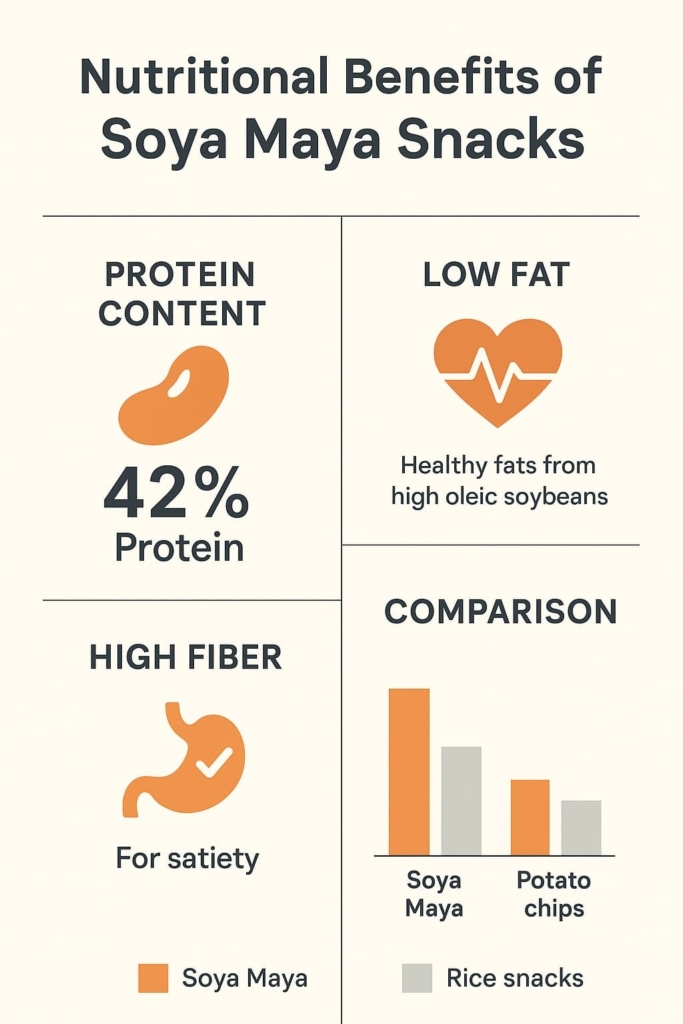
When people grab a bag of Soya Maya, they’re probably thinking about that savory crunch they’re craving. But these tempeh-based treats pack way more goodness than most folks realize.
Each handful delivers a protein punch that’s pretty impressive. We’re talking about 42% protein content from carefully picked soybeans. That’s not just a number on a label; it reflects what truly defines a high protein snack balanced, protein-rich bites that sustain energy through long meetings or those post-workout hunger pangs.
The beauty of Soya Maya snacks lies in their simple yet smart makeup. They’re naturally low in fat (yep, that’s a real thing), but don’t skimp on fiber which means they’ll actually keep you full instead of leaving you hunting for more snacks 20 minutes later. The high oleic soybeans used don’t just sound fancy, they’re actually doing your heart a favor with their healthy fats (2).
Nobody wants to feel guilty about snacking, right? These crunchy bites won’t weigh you down like those greasy potato chips or those starchy rice snacks we all know too well. Each serving brings more protein, fewer empty calories, and that satisfying crunch that makes snack time worth looking forward to.
Just remember not all protein-rich snacks are created equal, but Soya Maya hits that sweet spot between taste and nutrition that’s pretty hard to find these days.
FAQ
How do high protein foods like soya chunks or boiled soya help people build muscle or lose weight in their daily meals?
High protein foods such as soya chunks or boiled soya are great for those looking to build muscle or lose weight. They help you feel full longer and repair muscle after workouts. Adding them to your daily meals or meal prep can improve recovery and reduce snacking. Pairing them with brown rice or basmati rice also gives you steady energy throughout the day.
What are some high protein evening snack ideas using soya cutlets, masala soya chunks, or soya tikka for better weight loss results?
If you’re trying to lose weight and want high protein evening snacks, try soya cutlets, masala soya chunks, or soya tikka. These options are light yet satisfying. You can season them with sea salt or a squeeze of lemon juice for extra flavor without adding many calories. Eating them as part of your balanced meal prep helps manage cravings and supports your weight loss goals.
How can meal prep with brown rice, samak rice, or white rice work well with high protein foods like boiled soya chunks?
Meal prep that includes grains like brown rice, samak rice, or white rice can balance your nutrition when combined with high protein foods such as boiled soya chunks. This pairing supports steady energy for workouts or busy days. It’s best to include a mix of healthy fats and vegetables for complete nutrition, especially if your goal is to build muscle or manage weight.
Why is food safety important when preparing high protein side dishes like boiled soya, soya chunks, or soya cutlets with hot water and sea salt?
Food safety matters when cooking high protein foods such as boiled soya, soya chunks, or soya cutlets. Always soak them in hot water to remove impurities, and rinse well before cooking. Using clean utensils and seasoning with sea salt keeps your dish fresh and safe. Proper cooking also protects you from harmful bacteria while keeping nutrients intact for a healthy side dish or main meal.
Conclusion
Soya Maya brings authentic Indonesian tempeh straight from Greensburg, Indiana to your kitchen. Their journey started in 2002, crafting fresh tempeh with locally-sourced organic soybeans. Now, they offer protein-packed Fresh Frozen Tempeh and crunchy Tempeh Chips that blend high-protein and high-oleic soybeans.
Each bite supports local farmers and children’s education in Indonesia, while delivering essential nutrients like B12. Every product’s made in small batches, keeping true to traditional fermentation methods.
Ready to taste tradition? Visit the Soya Maya shop
References
- https://www.frontiersin.org/journals/nutrition/articles/10.3389/fnut.2024.1394916/full
- https://bmcpublichealth.biomedcentral.com/articles/10.1186/s12889-024-17862-x




